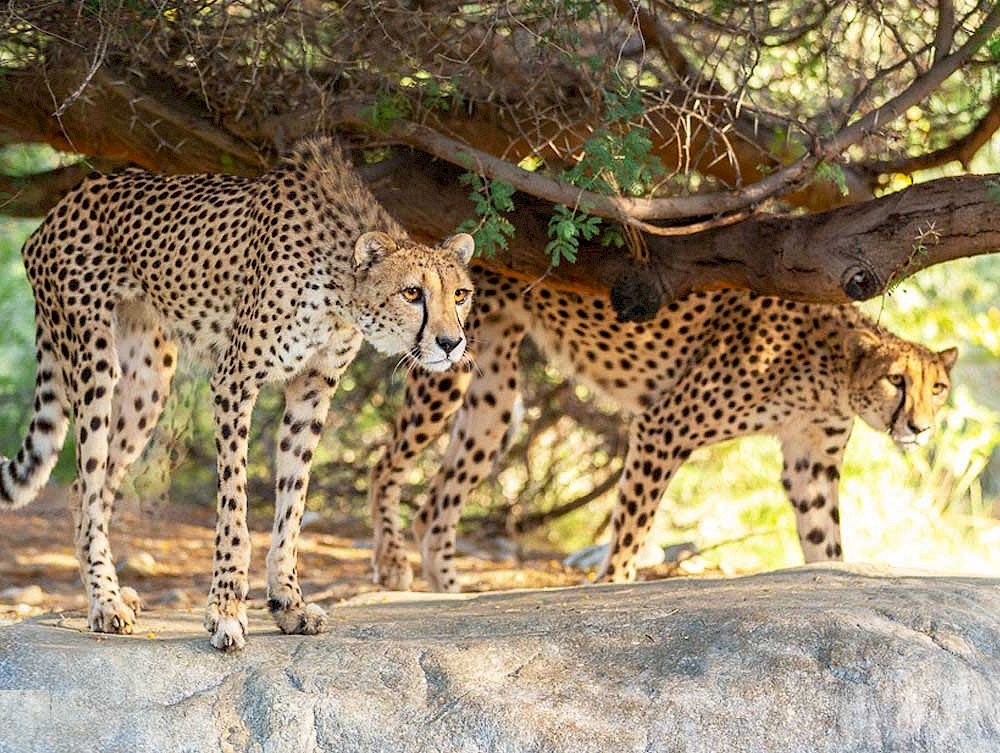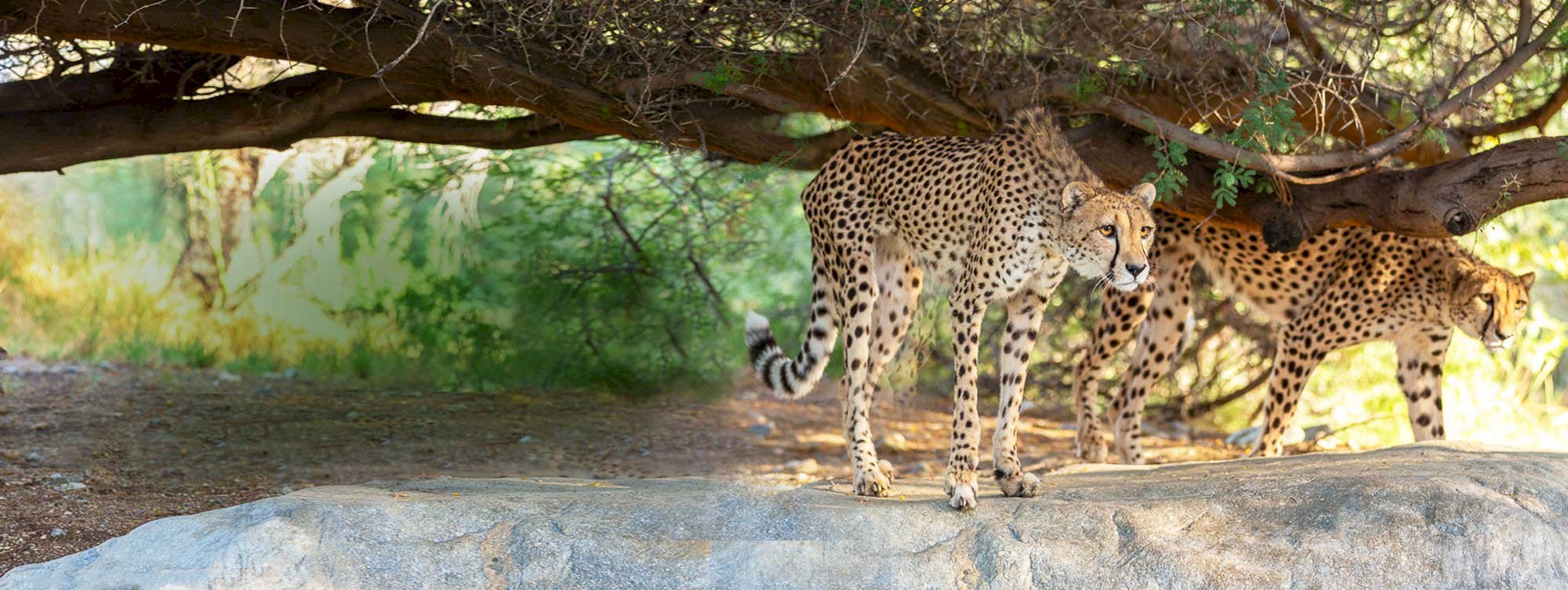Propagation in the Coachella Valley Preserve
December 6, 2022
By Emily “Lou” Thomas, Assistant Conservation Scientist
In the summer of 2021, Emily Thomas and Natalie Gonzalez of The Living Desert's Conservation Department, accompanied by The Living Desert's propagator Jose Marfori, trekked through the Coachella Valley Preserve in search of seeds from honey mesquite trees (Prosopis glandulosa). These native trees can sometimes appear more like a low-growing shrub but can also reach up to 50 feet tall with straight, sturdy spines along their branches and feathery foliage. During specific times of the year, mesquite produce delicate, yellow flowers and, as is common for legumes, long “bean pods” that contain fruit and seeds. A great source of nutrients, the pods are eaten by many different species of wildlife.
The Living Desert's staff surveyed many mesquite trees and collected seeds from ten different parent plants in the Preserve. Since then, our Conservation Team has grown over 100 trees, more than 10 per parent plant, taking care to maintain the local genetic components of the mesquite in that specific ecosystem, while still producing trees with genetic variability suited to that area.
The Living Desert's Conservation Team, including staff and volunteers, propagated and cared for the plants until October 2022 when they were large enough to out-plant. This was no small feat as the trees have to go through many processes in order to get them ready to go back into the desert. Just to have successful propagation, the team had to remove seeds from their sturdy pods, scarify (scratch to just barely expose the embryo) each one, soak them all overnight in warm water, and then plant them into a specific seed mix soil. Because the field team was so successful in procuring seeds, they were able to collect enough to test different methods of seed processing and propagation, and found this strategy to be the most successful.
This propagation process mimics that of being eaten, going through a digestive tract, and then distributed via fecal by wildlife. Many species of wildlife, including Gambel’s quail, jack rabbits, and coyotes, eat the pods of mesquite trees. Mesquite trees are, however, utilized in many different ways by native animals. Small rodents like kangaroo rats and lizards, including desert iguanas, will climb the trees to eat the foliage, birds nest in the canopy, pollinators visit the flowers to collect nectar, and multiple butterfly species lay their eggs on it for their caterpillars to consume once they hatch. In order to be of such great ecological importance, trees must live to maturity and become well-established in their habitat.
As the honey mesquite grew, the team shifted plants into larger pots to encourage deep root growth. Being well-suited to its desert environment, mesquite often grow a deep tap roots in order to find water. A deep root also ensures a sturdy tree above ground that can withstand the elements. The Living Desert's staff and volunteers monitored the trees’ growth, survivorship, and protected them from weather and herbivory by taking diligent notes, adding supports to plants where needed, and keeping the plants in an enclosed area. Young sprouts and even young, year-old trees are favored by many herbivores for their soft stems and easily-accessible nutrients. Biting through a supple tree with newly forming wood is much easier than gnawing into a thick-barked adult.
These mesquites were grown specifically to be planted around a pond at the Coachella Valley Preserve that is home to a population of desert pupfish (Cyprinodon macularius). The addition of the trees will decrease access to the pond for people who may potentially disrupt the pupfish and their ecosystem while also creating a natural wind break. Mesquite, being a great source of nutrients for a wide variety of native wildlife, and growing formidable spines, was perfect for this role.
The out-planting was a joint effort between the Coachella Valley Preserve, Urban Conservation Corps, Master Gardeners, and The Living Desert Conservation Team. We out-planted, watered-in, added support, and built cages around all 100 of the mesquite trees. Working efficiently together, we were able to get plants out of their pots and into their well-protected places around the pond in a single day!
Partnering with local institutions allows us to create meaning conservation work right here in our valley. These partnerships strengthen our presence in our local community and works towards our mission of advancing desert conservation through habitat restoration and human behavioral change.














